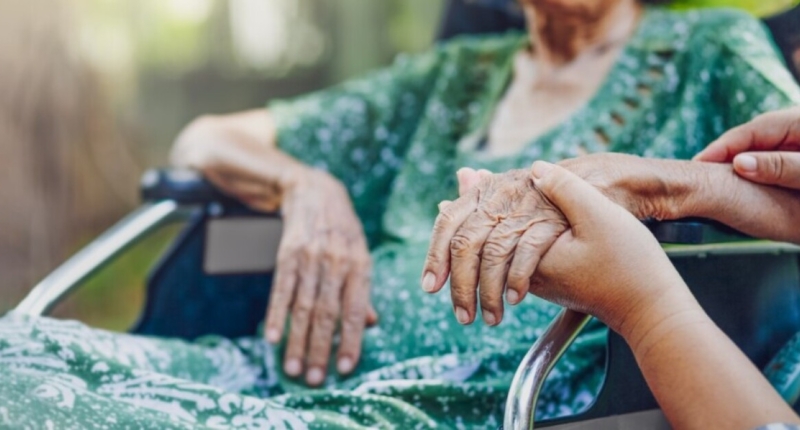Researchers are investigating new ways to evaluate the social circumstances of older adults and identify the health risks they face. The term “social frailty” describes the condition of individuals who lack resources, such as close relationships or support from others, to cope with health challenges. Social frailty can increase the risk of falls, disability, hospitalization, and earlier death in older adults. Several new social vulnerability indices have been developed to predict an increased risk of death in older adults, complementing medical tools. Geriatricians regularly screen older adults for extra needs and refer them to social workers or modify their plan of care. Oak Street Health, a chain of primary care centers for older adults, combines medical and social information in a global risk assessment, which separates seniors into four tiers of risk, and informs the kinds of services provided to patients. Seniors can also evaluate themselves using a five-item index developed by Japanese researchers to determine if they are socially vulnerable.
As people age, their social circumstances become increasingly important to their overall health and wellbeing. Researchers are investigating new ways to assess the social circumstances of older adults and identify potential risks that could compromise their health.
Consider three hypothetical women, all in their mid-70s and living alone with similar health conditions. Ms. Green, Ms. Smith, and Ms. Johnson are in identical economic circumstances, but their social situations vary significantly.
Ms. Green stays home most of the time, but she maintains regular contact with friends and family by phone and participates in a virtual college class with a discussion group.
Ms. Smith also stays home but has lost contact with her friends and rarely interacts with others beyond watching TV.
Ms. Johnson, on the other hand, has a robust social network, with many friends and activities. She walks regularly with her neighbors, volunteers twice a week at a local school, attends church, and stays in close touch with her children.
These social differences could have significant implications for their health. For example, if any of the women experienced a fall, pneumonia, or a serious health issue, Ms. Johnson would likely have more resources to draw on, such as friends who could provide transportation or help with daily tasks. Ms. Green would also likely receive assistance from several people, but Ms. Smith would be unlikely to receive much help and may have a poorer outcome if her health was challenged.
Social frailty is a condition that can occur in older adults who lack strong social connections, cannot rely on others for help, are not active in community groups or religious organizations, or live in unsafe neighborhoods. This condition is a corollary to physical frailty, which is characterized by weaknesses such as exhaustion, unintentional weight loss, slowness, and low physical activity. Physical frailty has been shown to increase the risk of falls, disability, hospitalization, poor surgical outcomes, admission to a nursing home, and earlier death in older adults.
Social frailty can also have severe health consequences, including poor health outcomes in later life. Additionally, factors such as low socioeconomic status, poor nutrition, insecure housing, and inaccessible transportation, which are known as social determinants of health, can contribute to social frailty.
In summary, older adults who are socially frail may be at increased risk for poor health outcomes due to a lack of resources and support. Social frailty is a critical component of overall health and wellbeing in later life and should be assessed and addressed in older adults to mitigate its negative effects.
Social frailty refers to the lack of social connections and resources that can leave older adults vulnerable to negative health outcomes. This way of thinking about social circumstances and their influence on health is gaining attention from experts in the U.S. and elsewhere.
Dr. Melissa Andrew, a professor of geriatric medicine, published one of the first social vulnerability indices for older adults in 2008, stating that social frailty assumes each factor contributes to an older person’s vulnerability and interacts with and builds upon each other. This approach provides a more comprehensive picture of older adults’ circumstances than any one factor alone.
Recently, researchers at Massachusetts General Hospital and the University of California-San Francisco published a 10-item social frailty index in the Proceedings of the National Academy of Sciences journal. The index helped predict an increased risk of death during the studied period in a significant number of older adults, complementing medical tools used for this purpose.
According to Dr. Sachin Shah, a co-author of the paper, the goal is to help clinicians identify socially frail older patients and prompt problem-solving designed to help them cope with various challenges. This approach adds dimensions of what a clinician should know about their patients beyond current screening instruments, which are focused on physical health.
Meanwhile, a team of Chinese researchers recently published a comprehensive review of social frailty in adults aged 60 and older. They determined that 24% of these older adults, assessed both in hospitals and in the community, were socially frail, a higher percentage than those deemed physically frail (12%) or cognitively frail (9%) in separate studies. Most vulnerable were people 75 and older.
Experts point out that social frailty goes beyond the corridors of medicine, and society needs to build solutions to the issues raised in the index. These issues include the ability of seniors to work, volunteer, and engage with other people; the safety and accessibility of neighborhoods in which they live; ageism and discrimination against older adults; and more.
In conclusion, social frailty is a new way of assessing older adults’ vulnerability to negative health outcomes due to a lack of social connections and resources. This approach provides a more complete picture of older adults’ circumstances than any one factor alone and can help clinicians identify socially frail patients and prompt problem-solving designed to help them cope with various challenges.
Social frailty has significant implications for health care, with older adults who are socially vulnerable needing more help during recovery from surgery or hospitalization. A well-vetted social frailty index could be useful in identifying older adults who need extra assistance and directing them to community resources. However, primary care physicians and specialists don’t routinely take the time to screen older adults for extra needs, making geriatricians an essential part of the care team.
Geriatricians regularly screen older adults for extra needs, but without using a well-vetted or consistent set of measures. They ask questions like, who do you depend on most, and how do you depend on them? Depending on the patient’s answers, geriatricians refer them to a social worker or modify their plan of care. However, these extra steps are often overlooked by primary care physicians and specialists.
Oak Street Health, a chain of primary care centers for older adults, is trying to change that in its clinics by asking patients about loneliness, social isolation, transportation barriers, food insecurity, financial strain, housing quality and safety, access to broadband services, and utility services. These findings, combined with patient-specific medical information, help identify seniors’ risk levels and inform the kinds of services provided to patients.
However, there is something crucial to older adults left out of this approach. Positive or negative relationships with other people are typically not measured, but essential in considering whether their social needs are being met. Linda Waite, the George Herbert Mead Distinguished Service Professor of sociology at the University of Chicago and director of the National Social Life, Health, and Aging Project, emphasizes this point.
In conclusion, social frailty necessitates a more comprehensive approach to caring for older adults that includes geriatricians, community resources, and assessing positive or negative relationships with other people. While geriatricians regularly screen older adults for extra needs, primary care physicians and specialists should also take the time to do this. Community resources like Oak Street Health offer a model for how to assess social needs and medical priorities together. However, we must also consider positive or negative relationships with others, an essential factor in older adults’ well-being.
Seniors concerned about their social vulnerability can assess themselves using a five-item index developed by Japanese researchers. The index asks seniors to consider their frequency of going out, visiting friends, being helpful to family and friends, living alone, and talking to someone daily. If the responses are unsatisfactory, seniors may need to reconsider their social circumstances and make changes.
Don’t miss interesting posts on Famousbio










